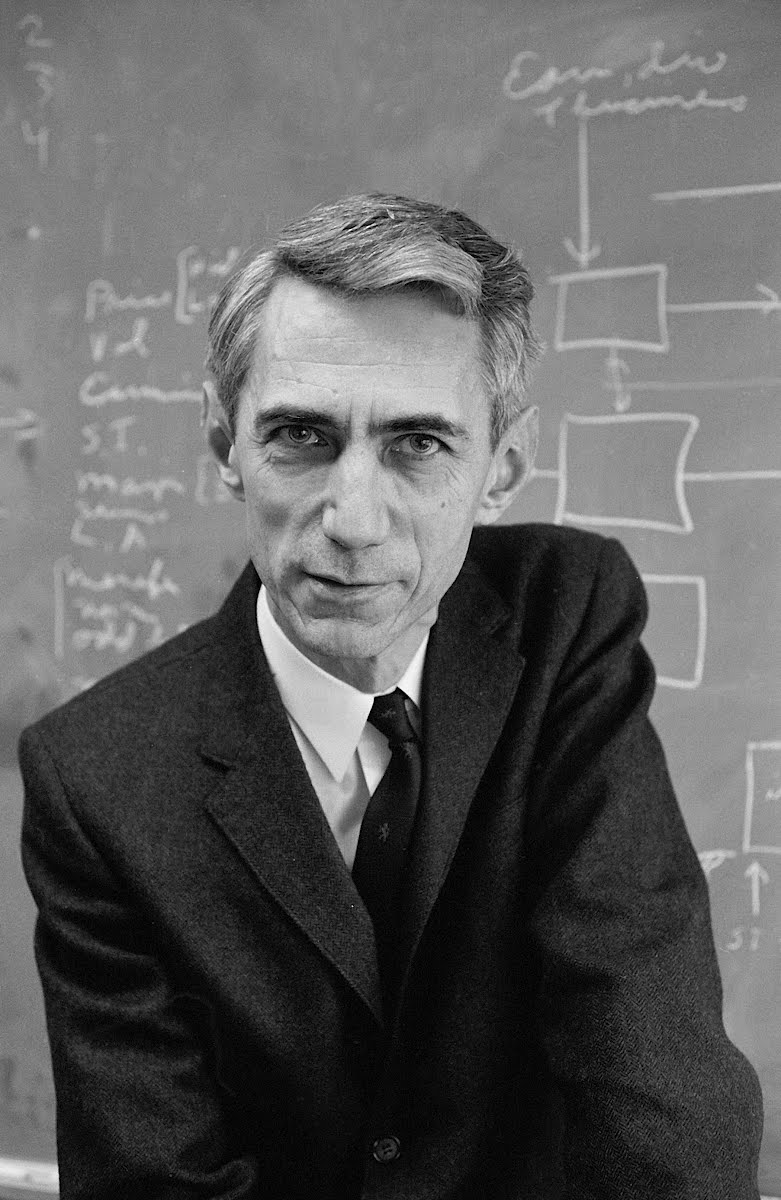Claude Elwood Shannon
1916-2001
The Father Of Information Theory
Information theory studies the quantification, storage, and communication of information. It was originally proposed by Claude E. Shannon in 1948 to find fundamental limits on signal processing and communication operations such as data compression, in a landmark paper entitled "A Mathematical Theory of Communication". Now this theory has found applications in many other areas, including statistical inference, natural language processing, cryptography, neurobiology, the evolution and function of molecular codes, model selection in ecology, thermal physics, quantum computing, linguistics, plagiarism detection, pattern recognition, and anomaly detection.
A key measure in information theory is "entropy". Entropy quantifies the amount of uncertainty involved in the value of a random variable or the outcome of a random process. For example, identifying the outcome of a fair coin flip (with two equally likely outcomes) provides less information (lower entropy) than specifying the outcome from a roll of a die (with six equally likely outcomes). Some other important measures in information theory are mutual information, channel capacity, error exponents, and relative entropy.
Applications of fundamental topics of information theory include lossless data compression (e.g. ZIP files), lossy data compression (e.g. MP3s and JPEGs), and channel coding (e.g. for Digital Subscriber Line (DSL)).
The field is at the intersection of mathematics, statistics, computer science, physics, neurobiology, and electrical engineering. Its impact has been crucial to the success of the Voyager missions to deep space, the invention of the compact disc, the feasibility of mobile phones, the development of the Internet, the study of linguistics and of human perception, the understanding of black holes, and numerous other fields. Important sub-fields of information theory include source coding, channel coding, algorithmic complexity theory, algorithmic information theory, information-theoretic security, and measures of information.
Although Shannon is noted for having founded information theory with a landmark paper that he published in 1948, he is perhaps equally well known for founding digital circuit design theory in 1937, when, as a 21-year-old master's degree student at the Massachusetts Institute of Technology (MIT), he wrote his thesis demonstrating that electrical applications of Boolean algebra could construct any logical, numerical relationship. Shannon also contributed to the field of cryptanalysis for national defense during World War II, including his basic work on codebreaking and secure telecommunications.
If you want to learn more about him, you can read his wikipedia entry.
